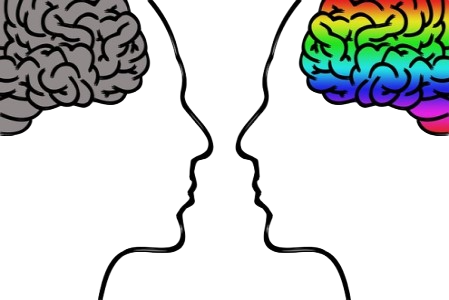The discipline of social psychology, though generally referring to the study of individual and social life, is not uniformly defined as to its scope, aims and research methods. This diversity is partly dealt with through the distinct perspectives found in approaching social psychological processes, with their particular assumptions, focuses, aims and methods.
But it is also managed through the differentiated domains of analysis (namely, societal, group, interpersonal, intrapersonal), each providing a particular type of explanation on a topic of investigation.
After summarizing the main features of these different domains along with illustrative examples of work within each, this essay will attempt to explore and evaluate three possible ways of coping with potentially multiple explanations of the same phenomena (offered by diverse domains), namely, reductionism, incommensurability and complementarity.
A domain of analysis involves some particular ‘knowledge’, focus of analysis and a specific stance about what constitutes appropriate issues for investigation and legitimate explanations (Sapsford, 1996).
Keeping in mind that the boundaries between different domains are not clearly marked, but rather permeable, so that one theory or research work cannot always be categorized solely to one of these, we can distinguish four major domains of analysis: societal, group, personal/interpersonal and intrapersonal. The societal domain centres on society at large and on the way prevailing socio-economic structures of a particular society penetrate relationships between groups of individuals (based on class, gender, ethnic background etc.), which are formed within it. Respectively, the types of explanations it provides are primarily placed in the societal level, considering that the social world is pre-existent rather than owned or generated by people, and that the person/group is relatively powerless to effect considerable change on social systems and practices (sociological determinism) (Sapsford, 1996). One example of work within this domain is discourse analysis in terms of collective representations of the social world, which are seen as formed through the history and structure of society and as imposing constraints on individual experience, action and thought (social constructionist approach).
In turn, the group domain deals with the internal dynamics of groups of people, not so much in terms of the actions and thoughts of individual participants, but essentially in terms of the entire group as a vibrant system whose properties arise from interpersonal action, or, in terms of the shared set of meanings formed among the participants. In consequence, the phenomena studied are explained as effects of the operation of the group as a whole. This type of analysis has been widely applied in relation to the dynamics of families and organizations; for instance, Menzies Lyth’s (1988 in Morgan and Thomas, 1996) study on the ways collective defences against the anxiety produced by an organization’s main task become established as social structures and work practices within the organization, which was based on Bion’s (1961) work regarding the conflict between the conscious demands of the group’s main task and the unconscious emotional needs of the group as a whole.
In comparison, the interpersonal domain is concerned with individual activity and interpersonal interaction within a given group of people. The person is considered as a whole, both being distinct from other people and also related to, and in interplay with them. Explanations are given at the level of the individual, while acknowledging the crucial role of social interaction in shaping the person (Sapsford, 1996). An illustration of this type of explanation is found in Kelly’s (1955) personal construct theory, which views the person as a scientist, constructing and reconstructing his/her personal set of meanings about the world, through exploration, examination and testing (Stevens, 1996). Interpersonal explanations have also been applied in the study of family dynamics – focusing on the ways each member handles oneself and others’ selves through continuous interaction (e.g. offering/denying reward, validation etc. to each other) – and of attraction, friendship and child development.
Finally, the intrapersonal domain centres on the processes which take place within the individual, in terms of both cognition (e.g. memory, categorization, thought, emotion) and motivation (e.g. the need for control and self-esteem) (Lalljee, 1996). By contrast to the interpersonal domain, it treats the person as consisting of components that are connected by internal processes, and provides explanations with regard to these internal dynamics of the person. Biological explanations and most psychodynamic ones – with their focus on internal processes – fit in the intrapersonal domain. The same holds for personality theories which view the individual as made up of elements such as extraversion, stability and anxiety (e.g. Eysenck’s (1981)), and for attitude theories which locate attitudes/beliefs within the person.
However, as already mentioned, the allocation of a theoretical/research work into a particular domain is often impossible, as the different domains of analysis are not clearly demarcated. For instance, it is often difficult to distinguish between the interpersonal and intrapersonal, so while psychodynamic work is essentially grounded in the intrapersonal domain, it also deals with typically interpersonal topics such as relationships (e.g. Freud’s and Klein’s instinct theories which see relationships as instigated by biological drives to seek pleasure; object relations theory which regards relating as a human motivation in itself (Thomas, 1996), and so forth). And though Kelly’s work can be classified as personal/interpersonal since it is concerned with how individuals act in order to test and modify their understandings about the world, it may also be seen as intrapersonal for it centres on the contents of the individual’s system of meanings (Sapsford, 1996).

Actually, some social psychological perspectives which are essentially based in a particular domain of analysis/explanation, provide insight into diverse issues that are the province of other domains. This is clearly illustrated in the case of the psychodynamic approach, which tends to explain phenomena in relation to internal processes of the individual – intrapersonal level – and yet illuminates topics of the interpersonal domain as noted above, of the societal (e.g. the way ideologies are reproduced from one generation to the other (Jacoby, 1975 in Sapsford, 1996)), and of the group domain (e.g. Bion’s (1961 in Morgan and Thomas, 1996) work on group processes).
It is also the case that different domains of analysis may draw on the same theoretical work; for example Kelly’s ideas about constructs or beliefs being held within the person’s cognitive system through which s/he views the world, can be employed by attitude research in the intrapersonal domain, as well as by systemic research on how actions and meanings are jointly constructed by individuals through mutual interaction (Dallos, 1996), at the group level.
Moreover, there are some perspectives that lie in multiple domains; for instance the discourse analysis we mentioned above as an example of analysis at the societal level, can also be placed in the personal/intrapersonal domain, as it deals with constraints on thought (Sapsford, 1996).
The above discussion suggests that there can be multiple explanations of the same topic, coming from different domains of analysis.
For example, the issue of racism has been explained at the intrapersonal level in biological terms, as being built into humans through natural selection (e.g. Hamilton, 1975; Reynolds, 1986 in Wetherell, 1996), or in psychodynamic terms, through the concepts of the ‘authoritarian personality’ (Adorno et al., 1950 in Wetherell, 1996) and ‘unconscious pleasure’ (e.g. Elliot, 1992). At the group level it has been explained as a result of group function; for example, Sherif and Sherif’s (1969) realistic group conflict theory suggests that racism is linked to inter-group competition for scarce resources, while Tajfel and Turner’s (1979) social identity theory adds that the members’ need for a positive social identity which relates to their group’s position may also be determinant in itself. At the societal level, explanations have been given in terms of collective representations of ‘otherness’ determined by historical, economic and political factors (e.g. Miles, 1989; Rattansi, 1995 in Wetherell, 1996). Finally, interpersonal theories account for the behaviour of ‘socially mobile’ individuals who may intentionally act as if they were members of another race group, seen as more favoured than their own, in order to ameliorate their personal position irrespective of their group (Tajfel, 1981 in Wetherell, 1996).
One way of handling such diversity of explanations is the reductionist strategy, whereby a single domain is considered as primary, designating the fundamental level of explanation which can account for all the processes occurring at the other domains. For example, from a socio-biological viewpoint it could be claimed that evolutionary inclination towards favouring members of one’s own kin group (compared to strangers) on the grounds of potential reciprocity, may still be the basis of present-day behaviour (Reynolds, 1986 in Wetherell, 1996). So, following Van den Berghe’s (1981) reasoning, we may consider contemporary ethnic groups as extensions of kin groups, where people’s preference in kin is extended to the members of the same ethnic group, which inevitably results in hostility towards non-members. Within a reductionist strategy, this could be the main explanation of all racist phenomena noticed in terms of group conduct (group domain), interpersonal relations (interpersonal domain) and models of structural/material inequalities (societal) (Open University, 2002).
Another way is to treat different kinds of explanations as incommensurable because they present totally different views of the topic that cannot be compared. For instance, while at one extreme, biological accounts of intergroup conflict attribute racist behaviour to human nature which is seen as pre-social, at the other extreme, purely societal approaches see human reactions as determined by the social context, and the human nature as culturally and historically shaped (Wetherell, 1996). Faced with such incompatibility, many researchers prefer to leave the societal domain in the province of sociologists, and confine their work to other domains assuming the social context as a relatively invariant factor.
A final strategy is to regard explanations from different domains as complementary, as illuminating different aspects of the topic, which would call for interrelation and synthesis between them. We might, for example, notice that both social cognition theory (concerned with the cognitive processes associated with racism) and social identity theory which are located in the intrapersonal domain, as well as social constructionist research at the societal domain, are interested in the process of group categorization which underlies racism. Social cognition research would focus on the implications of this process for the way the human mind is built to work, and on how existing categories lead to prejudiced judgements involved in racism, while the social identity and social constructionist approaches would deal with the way in which group categories are defined, the historical processes involved, and the kinds of identities these categories make available for individuals to adopt (Wetherell, 1996). A social identity approach would link the strategies of discrimination adopted by different people and groups of people with the tendency to maintain a positive self-image and group identity, and would explore the implications of categorization for the development of cognitive strategies to handle a potentially negative social identity on the part of disadvantaged group members. A social constructionist perspective would focus on the ways people’s representations of their own identity and other people’s identities become collectively defined, and discursive analysis would explore the role of language in constructing personal and group identities. Psychodynamics would also be concerned with the processes of categorization and identification but would particularly contribute to accounting for the passion and emotional dynamics associated with racist acts and for the individual variation regarding involvement in these (Wetherell, 1996).
Although only one or some of these approaches may fit in a given instance of racist behaviour, we can argue that combining the insights provided by each, would produce the best understanding possible. After all, the various perspectives all recognize the diversity of factors affecting human behaviour: biological, developmental, cognitive, social factors and also personal agency, conscious awareness and relationships (Stevens and Wetherell, 1996).

In summary, our discussion indicated that the notion of ‘domains of analysis’ is useful in handling the potential disorder produced when issues that are typically dealt with by one perspective are explained by another; e.g. the social construction of racist views (social constructionist perspective) is explained in terms of biological differences (biological).
‘Domains of analysis’ also account for the fact that one perspective may illuminate topics within the province of another; e.g. the use of psychodynamics to deepen our understanding of social relationships or values. Some perspectives (e.g. the biological) are inclined to reduce explanation into one domain (reductionist strategy), arguing that it is the prime explanation which also accounts for processes occurring at other domains. Others confine their work in specific domains due to the particular assumptions they make about the research topic. And some others are located in multiple domains and can cope with issues from across diverse domains; e.g. social constructionism looks at the society’s structure and history as well as with how these affect individuals within it.
It was also suggested that treating different modes of explanation (provided by the different domains of analysis) as complementary would be the most efficient strategy in illuminating social psychological phenomena.
Terms and Conditions for Republishing Content
Article Author: Panagiota Kypraiou MSc Health Psychology, MBPsS - Body & Gestalt Psychotherapist (ECP) - Body Psychotherapy Supervisor - Parents' Education Groups Coordinator https://www.psychotherapeia.net.gr
References
Dallos, R. (1996) ‘Creating relationships’ in Miell, D. and Dallos, R. (eds) Social Interaction and Personal Relationships, London, Sage/The Open University.
Lalljee, M. (1996) ‘The interpreting self: an experimentalist perspective’ in Stevens, R. (ed.) Understanding the Self, London, Sage/The Open University.
Morgan, H. and Thomas, K. (1996) ‘A psychodynamic perspective on group processes’ in Wetherell, M (ed.) Identities Groups and Social Institutions, London, Sage/The Open University.
Open University (2002), D317 TMA Booklet 2002, The Open University.
Sapsford, R. (1996) ‘Domains of analysis’ in Sapsford, R (ed.) Issues for Social Psychology, London, The Open University.
Stevens, R. (1996) ‘The reflexive self: an experiential perspective’ in Stevens, R. (ed.) Understanding the Self, London, Sage/The Open University.
Stevens, R. and Wetherell, M. (1996) ‘The self in the modern world: drawing together the threads’ in Stevens, R. (ed.) Understanding the Self, London, Sage/The Open University.
Thomas, K. (1996) ‘The defensive self: A psychodynamic perspective’ in Stevens, R. (ed.) Understanding the Self, London, Sage/The Open University.
Wetherell, M. (1996) ‘Group conflict and the social psychology of racism’ in Wetherell, M (ed.) Identities Groups and Social Institutions, London, Sage/The Open University.





